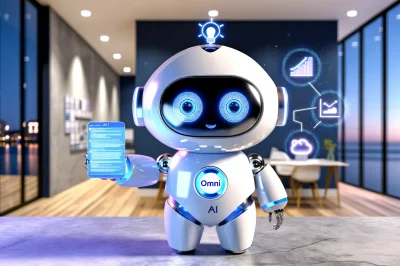Creating SEO-Optimised Content Using AI Technology

Table of Contents
- The Power of AI in Content Creation
- Real-Life Success: Swansea Businesses Thriving with AI
- Myths of AI in SEO Debunked
- Avoiding Common AI Content Mistakes
- The Future of AI-Powered SEO Content
- Comparing AI versus Traditional Content Creation
- Time-Saving Benefits of AI in Marketing Automation
- Achieving Personalized Marketing with AI
- Choosing the Right AI Tools for Your Business
- Measuring Success: Analyzing AI-Driven SEO Results
Introduction
In today’s digital landscape, small business owners in Swansea are seeking effective ways to grow their customer base while optimising their time and resources. With the advent of AI technology, creating SEO-optimised content has never been more accessible or efficient. This guide will explore how small businesses can harness AI for dynamic, results-driven content creation, boost their online presence, and embrace marketing automation tools that save time and convert leads effectively. Drawing on insights from content strategies reminiscent of Brian Dean and Neil Patel, this blog post offers a punchy, data-driven roadmap tailored specifically for Swansea’s thriving business community.
The Power of AI in Content Creation
Swansea’s business landscape is rapidly transforming with the integration of artificial intelligence (AI) tools, particularly in search engine optimisation (SEO) strategies. Notable successes are emerging, showcasing the potential of AI-driven solutions to streamline operations and boost performance.
Travel House, a Swansea-based travel agency, has effectively harnessed AI through ITV’s innovative advertising initiative. By utilising AI-generated content, Travel House launched impactful ads on platforms like ITV1 and ITVX, demonstrating that small-to-medium enterprises (SMEs) can access sophisticated marketing tools traditionally reserved for larger corporations. The campaign, initiated in late 2024, carried into 2025, leveraging AI’s capabilities to create dynamic, audience-targeted advertisements that resonate well with local demographics.
Another remarkable case is a plumbing company in Swansea that adopted HubSync, an AI platform designed to enhance customer follow-up processes. This tool automated communications via SMS, email, and chatbots, leading to a stunning 40% increase in conversion rates. Automating engagement with customers not only reduced response times but also improved overall client satisfaction—critical in a sector where time and efficiency are paramount.
The broader implications of Google’s 2025 Local Update further affirm the need for hyper-local SEO strategies among Swansea businesses. This update emphasises the integration of AI tools for enhanced local search performance. Businesses are encouraged to implement AI chatbots to improve user experience and optimise websites for voice search queries, ensuring they remain competitive amid shifting consumer habits. Additionally, tools like Jasper for content creation and predictive analytics can significantly elevate an organisation’s market presence by effectively targeting high-value leads.
These examples illustrate how leveraging AI can reshape business strategies, driving sustained growth and efficiency improvements in Swansea’s competitive landscape.
Real-Life Success: Swansea Businesses Thriving with AI
While specific named company case studies for Swansea are limited, recent initiatives highlight effective AI-driven strategies and measurable outcomes for local businesses.
Swansea Plumbing Firm: AI-Driven Lead Automation
A standout example is a Swansea-based plumbing company that leveraged HubSync, an AI-powered automation tool, to streamline lead follow-ups via SMS and email. This approach:
- Increased conversions by 40% by maintaining consistent engagement with prospects.
- Enhanced local SEO through optimised service pages and Google Business Profiles (GBP) updates, aligning with Google’s 2025 emphasis on hyper-local and E-E-A-T-driven content.
This case demonstrates how AI can address common challenges like limited resources and competitive markets by automating repetitive tasks and improving response times, critical for local service businesses.
Broader AI SEO Strategies in Swansea
Local businesses are adopting AI tools to overcome marketing hurdles:
| Strategy | Tools/Applications | Impact |
|---|---|---|
| Local SEO Optimisation | Google Business Profile (GBP), Structured Data | Improved visibility in voice search and neighbourhood-specific queries. |
| Predictive Analytics | Data analysis platforms | Personalised campaigns tailored to regional demographics and behaviours. |
| Content Automation | Jasper, Surfer SEO | Rapid content creation for blogs, social media, and ads, optimised for SEO. |
| Customer Engagement | AI Chatbots (e.g., HubSync) | 24/7 support and lead capture, reducing wait times and improving service efficiency. |
Key Lessons from AI SEO in Swansea
- Hyper-Local Focus: Tools like GBP help businesses target precise neighbourhoods, aligning with Google’s shift toward location-specific results.
- AI as a Scalability Tool: Automation enables small businesses to compete with larger enterprises, as seen in content generation and lead management.
- Quality Over Quantity: While AI can produce large volumes of content, human oversight remains crucial to avoid penalties and ensure E-E-A-T compliance.
For Swansea businesses, adopting AI-driven tools like HubSync or content optimisers can drive measurable growth while staying aligned with Google’s evolving local SEO standards.
Myths of AI in SEO Debunked
In the rapidly evolving landscape of content creation, misconceptions about AI can cloud judgment, leading many business owners to shy away from technology that could revolutionise their SEO strategies. Let’s debunk some of the most common myths surrounding AI in content creation and reveal the truth behind them.
Misconception 1: AI Will Damage Brand Credibility
Many believe that AI-generated content diminishes a brand’s value and reader trust. However, strategic integration of AI tools has proven to enhance revenue and efficiency. For instance, The Washington Post uses automated reporting to focus on in-depth investigative work, improving subscriber retention. Similarly, Forbes’ “Bertie” AI tool has increased article output and reader engagement significantly, proving that AI can enhance rather than harm brand integrity.
Misconception 2: AI Content Is Always Low Quality
There’s a fear that AI produces content that is formulaic or devoid of personality. Contrary to this notion, many studies demonstrate that AI can improve content quality and originality. For example, the Associated Press found that AI-generated earnings reports not only reduced errors but also expanded the diversity of coverage.
Misconception 3: AI Will Be Penalised by Search Engines
Another prevalent myth is that search engines penalise AI-generated content. In reality, Google prioritises the quality and relevance of content over its genesis. High-quality AI content meets the same standards as human-crafted material.
Misconception 4: AI Will Replace Human Creativity
While AI excels in tasks such as data analysis and basic drafting, it cannot replicate human creativity. Instead, it acts as a powerful assistant, freeing up human creators to focus on more complex, nuanced storytelling that truly resonates with audiences.
Misconception 5: AI Homogenises Content
Critics often argue that AI leads to a uniform style that undermines unique brand voices. However, successful AI implementations, like those seen at The New Yorker, showcase how AI can help maintain distinctive editorial perspectives while handling repetitive tasks efficiently.
Misconception 6: Adopting AI Guarantees Improved Outcomes
Finally, the belief that simply adopting AI will improve performance is misguided. Effective use of AI requires strategic implementation; without consideration of specific needs and brand voice, it can lead to disengaged audiences.
As you navigate these myths, remember that AI is not a threat to creativity or integrity; it’s a tool that can significantly enhance productivity and effectiveness when integrated thoughtfully. Embrace the potential of AI to enhance your content strategy and drive measurable results in your business.
Avoiding Common AI Content Mistakes
When using AI for content creation, several common pitfalls can undermine quality, originality, and effectiveness. Here are the most critical mistakes and strategies to avoid them:
Over-reliance on AI without human oversight
Relying solely on AI to generate content without human review leads to inconsistent quality, formulaic outputs, and robotic tone [Source: Narrato, Beomniscient]. Advanced tools still lack the nuance to maintain cohesive long-form articles or adapt to brand-specific styles.
Best practice: Use AI as a drafting tool, then refine outputs for tone, accuracy, and relevance.
Neglecting audience and brand alignment
- AI often fails to tailor content to specific audiences (e.g., C-suite vs. the general public) [Source: Narrato].
- It also struggles to maintain consistent voice and branding without explicit tone guidelines [Source: Narrato, FeedHive].
Solution: Provide detailed audience personas and enforce style guidelines when generating AI content.
Prioritising SEO over reader value
Keyword stuffing and forced optimisation can result in:
- Content Google deems unhelpful, triggering penalties [Source: Narrato, IoT For All].
- Irrelevant or tedious material that fails to engage readers.
Strategy: Focus on natural keyword integration and prioritise human-centric value over algorithm manipulation.
Ignoring ethical and quality control
Key risks include:
- Plagiarism or outdated information from training data [Source: Beomniscient, IoT For All].
- Cultural insensitivity or biased outputs.
Mitigation: Conduct manual reviews, verify sources, and use tools with transparency about training data.
Data quality and output limitations
AI-generated content is only as strong as its inputs. Poor results often stem from:
- Outdated training data [Source: Beomniscient].
- Overly complex prompts that confuse the model.
Solution: Simplify prompts, validate data freshness, and integrate human insights for unique perspectives.
Unrealistic expectations
- Believing AI can replace human creativity or build audience relationships.
- Expecting flawless output without iterative refinement.
Reality: AI works best as a collaborative tool to assist—not replace—human writers.
By addressing these issues through hybrid human-AI workflows, creators can unlock AI’s efficiency while maintaining originality and relevance.
The Future of AI-Powered SEO Content
AI-Driven Content Strategies
Generative AI Adoption is set to dominate 2025 content strategies, with 69% of marketers viewing AI as revolutionary for content creation and workflow efficiency. Brands are now generating 48–72 posts weekly across platforms, employing AI tools for everything from captions to translations, even in regulated industries [Source: Hootsuite, Deloitte]. Creative Automation enables quick repurposing of content, such as transforming whitepapers into blogs or social posts, ensuring brand consistency while saving time [Source: Typeface].
Hyper-Personalisation is advancing beyond generic AI outputs, demanding brand-specific AI training to ensure alignment with tone, visuals, and messaging. Technologies like Typeface Style Guides can adapt to brand assets and audience data, reducing reliance on basic templates [Source: Typeface].
SEO Impact
Answer Engines, including Google’s AI Overview and Bing’s ChatGPT integration, now prioritise semantic relevance over keywords, meaning a decrease in organic traffic as users find immediate answers. Zero-click searches now account for roughly 15% of queries, with long-tail keywords triggering AI Overviews about 60% of the time [Source: Circle S Studio].
Technical SEO remains paramount, with a shift from merely increasing traffic volume to focusing on conversion quality. The importance of video optimisation is escalating, as platforms like YouTube can enhance dwell time, backlinks, and keyword targeting, making it essential for comprehensive SEO strategies [Source: Research FDI].
Marketing Impact
Personalisation significantly influences revenue, as 81% of consumers express a higher likelihood to purchase from brands that deliver tailored experiences. GenAI is becoming a fundamental tool for enterprises, assisting in localising content, automating services, and optimising customer journeys [Source: Deloitte].
As Social Media rapidly evolves, AI Strategy Trends indicate that 76% of C-level executives harness AI for strategic planning, impacting everything from campaign management to trend forecasting. The concept of micro-virality, where AI identifies niche trends, is gaining traction as a crucial performance metric [Source: Hootsuite].
To thrive in 2025, brands need to remain agile with their AI strategies and prioritise ongoing technical SEO optimisation. Embracing these shifts will position businesses to leverage the full potential of AI-driven content creation and marketing.
Comparing AI versus Traditional Content Creation
AI-generated content is transforming the marketing landscape, driving efficiency and engagement like never before. Research indicates that AI-optimised content boasts up to 83% higher engagement rates compared to traditional human-generated counterparts, leading to improved metrics such as time on page and scroll depth [Source: Siege Media]. It’s not just about clickbait; AI can deliver scalable, effective solutions that resonate with audiences, ultimately enhancing conversion rates by 36% on landing pages [Source: Marketing Insider Group].
However, it’s essential to understand that traditional content still holds a vital place in effective marketing strategies. With 90% of content marketers planning to incorporate AI in their processes by 2025, the trajectory is clear [Source: Agility PR]. Yet, a study revealed that purely human content sometimes eclipses AI and even hybrid approaches regarding keyword rankings and overall traffic—indicating that there’s a significant role for human intuition and creativity in connecting authentically with audiences [Source: ArtSmart].
When considering audience perspectives, statistics reveal a fascinating nuance. Approximately 56% of consumers preferred AI-generated content when unaware of its origin. However, perception changed drastically when they learned the content was AI-driven, leading to a 52% drop in engagement [Source: Matrix Marketing Group]. Notably, Gen Z shows a marked preference for human content, suggesting that demographic nuances impact content effectiveness.
The future likely lies in hybrid strategies—where AI can manage routine content generation, freeing human writers to craft high-value narratives that require emotional depth and creativity. By combining the strengths of both approaches, brands can benefit from increased traffic growth while preserving the trust and creativity that consumers crave.
Time-Saving Benefits of AI in Marketing Automation
AI marketing automation tools are revolutionising how small businesses streamline their marketing efforts. By leveraging AI, these businesses drastically reduce the time spent on repetitive tasks, enabling them to focus on strategic initiatives that foster growth. Here’s how AI can optimise workflows and save time for small businesses:
Enhanced Efficiency
AI automates mundane tasks such as scheduling social media posts, managing email campaigns, and generating insightful reports, which traditionally consumed significant resources. For instance, tools like Zapier automate workflows by connecting different applications, allowing businesses to manage tasks without manual input [Source: Pipedrive]. Similarly, Pipedrive offers AI-driven email summarisation and content creation, reducing the time spent on crafting communication while improving engagement rates.
Cost-Effective Resource Allocation
AI tools help small businesses cut operational costs by minimising the need for manual labour on tasks like customer segmentation and lead nurturing. Salesforce Einstein utilises machine learning to predict customer behaviours and automate responses, enhancing efficiency while allowing teams to allocate resources better. With options like Mailchimp, businesses can set up automation for their marketing efforts without needing extensive budgets.
Hyper-Personalisation & Targeting
With AI’s analytical capabilities, small businesses can deliver highly personalised marketing content. Tools such as Tidio leverage AI to improve customer interaction through tailored chatbot responses, increasing conversion rates significantly. This personal touch helps in building stronger relationships with leads and customers.
Data-Driven Insights and Forecasting
AI also plays a crucial role in data analysis, enabling small businesses to make informed decisions. Tools like Surfer SEO offer optimisation insights that help target winning keywords based on real-time data, driving better performance in search engines. Additionally, Browse AI simplifies competitor analysis, enabling businesses to stay ahead in the market.
Scalability & Growth
AI tools help businesses scale without the need for commensurate increases in team size. Platforms like HubSpot facilitate end-to-end automation of marketing and sales processes, allowing small businesses to grow efficiently. By adopting AI-driven tools that automate ad generation and audience engagement, small businesses can expand their outreach without overwhelming their resources.
Incorporating these marketing automation tools not only enhances efficiency but also allows small businesses to focus more on strategic growth initiatives. Investing in AI technology is no longer optional; it’s a necessity for survival and success in today’s competitive landscape.
Achieving Personalised Marketing with AI
In the rapidly evolving landscape of digital marketing, AI stands out as a game-changer for small businesses seeking to create personalised marketing experiences. Leveraging AI technologies enables marketers to deliver tailored content and enhance customer engagement, which are crucial in today’s competitive environment. Here’s how small businesses can harness AI to elevate their marketing strategies.
Understand Your Audience
Start by using AI-driven analytics tools like Salesforce Einstein or Google Analytics, which sift through customer data to uncover valuable insights about preferences, behaviours, and purchasing patterns. This knowledge allows marketers to segment their audiences effectively and craft messages that resonate personally with different groups, enhancing overall engagement rates [Source: Pipedrive].
Use Chatbots for 24/7 Engagement
Implement AI chatbots such as Drift or Tidio to automate customer interactions. These bots can answer FAQs, schedule appointments, and even collect feedback, thus ensuring that customer queries are addressed in real-time, boosting satisfaction rates while freeing up human resources for more complex tasks [Source: Adobe Media].
Content Creation and Optimisation
Tools like Jasper AI and Surfer SEO not only help in creating high-quality content but also optimise it for search engines. These tools analyse top-performing content and recommend adjustments for improved SEO performance, ensuring that your marketing messages reach a broader audience [Source: Marker Milk].
Real-Time Personalisation
With AI, you can dynamically personalise website content based on visitor behaviour. This means that first-time visitors might see introductory offers, while return visitors see targeted promotions based on their previous interactions. Implementing tools like HubSpot can facilitate such personalisation automatically, enhancing the user experience significantly [Source: Circles Studio].
These steps illustrate a pathway for small businesses in Swansea to utilise AI in creating targeted marketing experiences that resonate with their audiences, ultimately driving growth and customer retention.
Choosing the Right AI Tools for Your Business
To choose the right AI tools for small business marketing, focus on tools that address specific challenges while balancing cost and ease of use. Below is a categorised guide to effective solutions:
Content Creation & SEO
- Jasper: Generates marketing assets like blog posts, social media, and sales emails. Integrates SEO tools and adjusts tone/style.
- Google Workspace with Gemini: Drafts content, organises data in Sheets and creates presentations. Free for basic use, with deeper integrations in paid Workspace plans.
- Frase.io: Optimises content for SEO ranking and analyses performance, ideal for voice search queries (e.g., “best Italian restaurant near me”).
CRM & Lead Management
- Pipedrive: Combines CRM with AI email creation, predictive lead scoring, and sales analytics.
- Sales Cloud Einstein: Provides AI-driven insights for lead scoring and forecasting opportunities. Part of Salesforce’s solutions, which include a free Starter Suite trial.
Email Marketing & Automation
- Phrasee: Personalises email campaigns using AI-driven copywriting. Demonstrated boosts in revenue and click-through rates.
- Pipedrive AI Email Creation: Generates tailored email content from prompts, adjusting tone and language, included in Pipedrive plans.
Social Media & Brand Monitoring
- Brand24: Monitors brand mentions across the web and analyses sentiment.
- Sprout Social: Helps in optimising social media ROI and managing campaigns.
Analytics & Data-Driven Decisions
- Einstein Analytics: Offers advanced data insights for sales, marketing, and customer service, integrated within Salesforce’s ecosystem.
- HubSpot Marketing Hub: Automates campaign tracking and provides free email marketing tools.
E-commerce & Ad Optimisation
- Trellis: Adjusts keyword bids and prices for Amazon sellers.
- Murf AI: Generates voiceovers for ads or training materials, supporting over 20 languages.
Workflow Automation
- Zapier: Builds AI chatbots and automates tasks across integrations; free tier available.
- involve.me: Creates interactive lead funnels and syncs data with Pipedrive CRM.
Key Considerations
- Budget: Prioritise tools with free trials or affordable entry plans.
- Integration: Tools like Zapier connect disparate apps, while Google Workspace and Salesforce offer unified platforms.
- Specific Use Cases: Use influencer campaigns tools like Influencity and customer service tools like Einstein Bots.
For a quick start, opt for Google Workspace or Jasper for content, Pipedrive for CRM, and Zapier for automation.
Measuring Success: Analyzing AI-Driven SEO Results
Evaluating AI-driven SEO success requires a careful blend of traditional and evolving metrics focused on visibility, engagement, and conversion in AI-powered search environments. The landscape is changing rapidly, making it essential to adapt your tracking strategies to meet modern challenges. Below are key performance indicators (KPIs) crucial for assessing the impact of your AI-enhanced SEO efforts.
Visibility in AI Responses
- Track the frequency of brand mentions in platforms like ChatGPT or Google SGE for targeted keywords [Source: Obility].
- Check link presence: see if AI-generated content summaries include your links [Source: Purplex Marketing].
- Monitor response positioning: mentions at the top of results are more valuable [Source: EWR Digital].
Tools such as Semrush or Profound automate this tracking, though periodic manual checks are advisable for accuracy.
Post-Click Engagement and UX
- Bounce rate: A lower bounce rate suggests the content resonates with AI-sourced traffic [Source: PGRMT].
- Time on page: Indicates how deeply users engage with your site’s content [Source: DigitalC4].
- Return visits: Track repeat visits to gauge retention and content effectiveness.
Comparing these metrics for AI-sourced traffic against traditional organic traffic helps refine your strategies.
Conversions and Revenue
- Micro-conversions: Track newsletter sign-ups and tool interactions [Source: PGRMT].
- Conversion rate: Monitor the percentage of visitors completing desired actions [Source: DigitalC4].
- Revenue attribution: Use analytics tools to identify revenue from AI-driven users.
Staying on top of these metrics ensures you can draw real connections between SEO efforts and business performance.
Brand Authority and Sentiment
- Domain authority: Constantly improve this metric through quality backlinks and sound technical SEO practices [Source: DigitalC4].
- Brand sentiment: Analyse the tone of AI mentions across various platforms.
- Structured data: Implement schema markup to enhance how AI tools read your content [Source: EWR Digital].
Emerging Trends and Adaptation
- AI interaction quality scores: Gauge how well your content fits within AI frameworks [Source: Purplex Marketing].
- Cross-platform consistency: Ensure that branding is uniform across text and voice AI interfaces, reducing fragmentation [Source: EWR Digital].
- Dynamic content adaptation: Fine-tune content structures to align with AI summarisation preferences [Source: PGRMT].
Focusing on these KPIs helps businesses navigate the complexities of AI-enhanced SEO, ensuring a balanced approach that includes both traditional metrics and emerging indicators that reflect new user behaviours.
Conclusions
In the evolving world of digital marketing, AI technology stands out as a transformative tool for small businesses in Swansea aiming for growth through SEO-optimised content. By understanding and implementing the strategies outlined in this guide, business owners can elevate their marketing efforts, enhance engagement, and drive conversions. Through AI, they automate processes, harness accurate data insights, and personalise customer interactions—each step reducing workload and amplifying impact. By doing so, businesses can ensure sustainable growth, reach wider audiences, and maintain competitive advantages in an increasingly digital marketplace.
Sources
- Agility PR – AI Generated Content in the News
- Adobe Media – AI Tools Every Small Business Marketer Should Use in 2025
- ArtSmart – AI Generated Content Statistics 2024
- Beomniscient – Pitfalls of AI Generated Content
- Circle S Studio – 2025 SEO Trends
- Deloitte – Marketing Trends 2025
- DigitalC4 – 9 KPIs for Tracking SEO Success
- EWR Digital – SEO KPIs in 2025: What to Monitor
- FeedHive – Mistakes People Make When Using AI for Social Media
- Hootsuite – Social Trends
- IoT For All – The Dos and Dont’s in Content Creation
- Kopa Marketing – How Google’s 2025 Local Update Impacts Your Wales-Based Business
- Marketing Insider Group – AI vs Human Content: What Actually Gets You Results?
- Marketer Milk – AI Marketing Tools
- Matrix Marketing Group – AI Generated Content vs. Human Content
- Mailmodo – AI for Small Business Marketing
- Narrato – 10 AI Content Creation Mistakes to Avoid
- Obility – GEO KPIs to Measure Success
- Omni Marketing – How Can AI Boost Your Swansea Business Growth?
- PGRMT – Visibility in the Era of Artificial Intelligence
- Pipedrive – Small Business Using AI for Marketing
- Purplex Marketing – Measuring Success in GEO
- Research FDI – Future of SEO with AI
- SEO Vendor – Common Misconceptions About Using AI for Content Creation
- Siege Media – AI Writing Statistics
- Sprout Social – AI Marketing Tools
- Surfer SEO – AI Platform SEO Case Study
- Team-GPT – AI for Small Business Marketing
- Typeface – Top Content Marketing Trends for 2025
- Google Workspace – AI for Small Business
- Affordable Marketing Solutions: The Swansea Small Business Growth Plan Under £500/Month – 15 May 2025
- AI in Accounting Marketing: Leveraging Technology for Client Acquisition – 15 May 2025
- The Essential Legal Content Management System: Organize Your Thought Leadership for Maximum Impact – 14 May 2025






